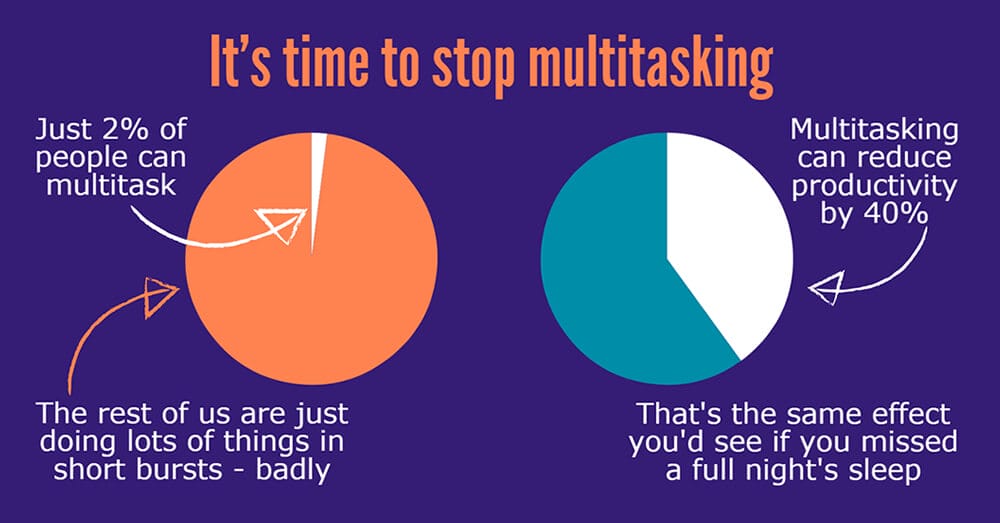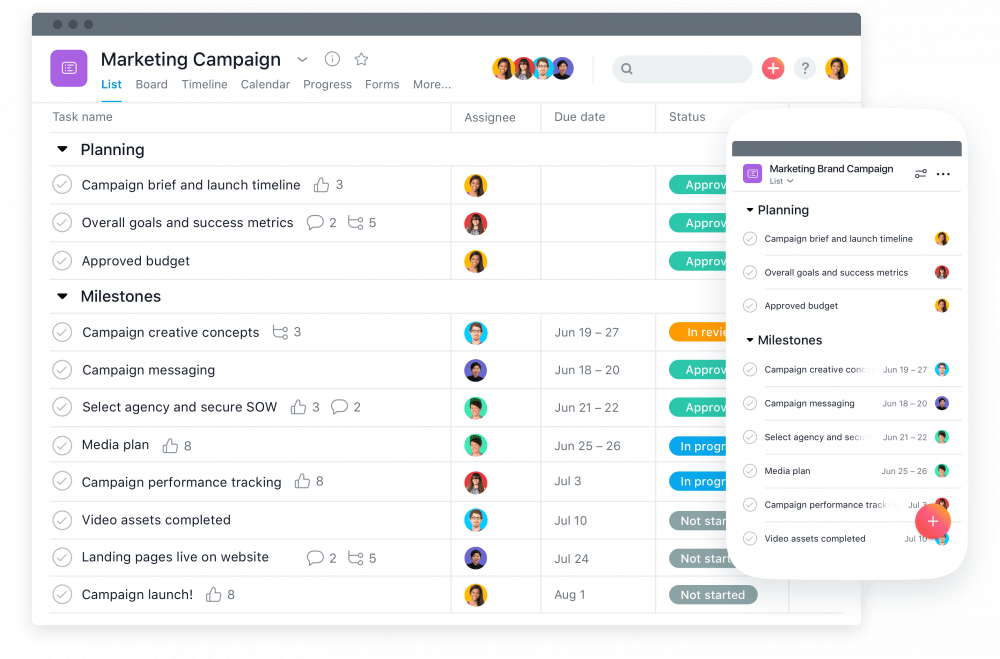Five Strategies on How to Manage Multiple Projects in the Workplace
If you’re trying to keep your projects and team on track, we’ve got you covered. This article will walk you through five ways to manage multiple projects in the workplace without a hitch.

As a project manager, managing multiple projects can feel like an uphill task, especially when your team is running in ten different directions and you are expected to keep the pace.
From prioritizing work and communicating expectations to organizing tasks and ensuring your team has a manageable workload, the struggle is real.
If you’re trying to keep your projects and team on track, we’ve got you covered. This article will walk you through five ways to manage multiple projects in the workplace without a hitch.
Get the Best Updates on SaaS, Tech, and AI
Five ways to juggle multiple tasks effectively:
Plan ahead
Just like a big event without a proper plan leads to chaos, the same can happen with your projects.
When you have a hefty to-do list, the best thing you can do is plan your tasks in the beginning. Without a successful project plan, deliverables are inconsistent. Plus, it might take a lot of unnecessary time to set up a new process each time.
Despite knowing this, many project professionals often cannot prioritize planning while juggling multiple tasks at once.
To fix this, have a plan in mind for every situation, plus a few contingency plans, if something goes south. Spend each morning carefully evaluating what you want to achieve that day.
Break down big goals into daily tasks. For example, you can’t add “build an online business” to your daily to-do list. Instead, add tasks like “create a product” or “do market research”. You can also organize each task with labels, such as due dates and importance.
Further, since not all tasks are compatible with one another, make sure you pick tasks you can work on at the same time.
In a nutshell, aim for consistency and flexibility while planning all your projects.
Avoid multitasking
This is easier said than done, but when you manage multiple tasks, putting your efforts and discipline on one task at a time can work wonders. In fact, studies show that multi-tasking is not as productive as you may think—it can reduce productivity by 40%.
Our brains lack the ability to handle multiple complex tasks at once. If you divide your focus, your brain will give less attention to each task than it would if you were to work on just one task at a time. Further, it takes more time to switch tasks than to work on them until you finish.
Suppose you must do two things at once. In that case, the right way is to mix cognitive activities (something that involves complex thinking and judgment, like writing a blog or talking with a client) with physical activities (such as taking a walk, making a cup of tea). Never try to do two or more cognitive tasks at once.
Instead, embrace the idea of doing one task at a time so you can easily cope with the rest of the workload that your projects require.
Communicate expectations clearly
Lack of communication is one of the significant issues in most organizations. Teams that suffer from miscommunication are often misaligned about what’s happening when.
Research shows that 86% of employees and executives believe lack of effective communication is the leading cause of workplace failure. On the other hand, companies with proper communication may increase their productivity by 25%.
Poor communication can make it difficult to get real-time updates regarding the project progress, understand why timelines are shifting, or whether priorities remain the same.
On the contrary, effective communication with your team can build a friendly atmosphere where your team members feel comfortable and focus on providing the best possible results.
Further, if your employees know what’s expected of them, it’s easier for them to attain project goals.
To get there, here’s what you can do:
- Find a reliable work or project management tool that allows you to share project team status and updates. Slack, Trello, and Asana are some great tools where you can put all project information in one place—and share it out with your team members with a single click.
This way, your team doesn’t have to spend extra time searching for data across spreadsheets, documents, and other tools.

- Hold weekly or monthly meetings to talk about what the employees are working on and also share the goals to be accomplished in a week or month. It enables you to know what’s working and what’s not, focus on the areas where employees are failing, and what you can do to fix each situation.
Use project management tools
When it comes to handling multiple projects at once, project management tools can be a blessing for you and your team. In fact, according to a survey, 96% of respondents believe that project management tools are critical for a business.
Modern project management software is equipped with a plethora of features you’ll need to manage your projects—from scheduling tasks, creating weekly reports, delegating tasks, and so on.
However, with hundreds of project tools available online, it’s hard to choose the one that suits your company and project needs.
But, don’t fret, as here are a few factors you can consider while selecting the right tool:
- Ensure the tool is compatible with your existing digital framework, such as communication tools, accounting tools, etc.
- Choose a tool that aligns perfectly with the kind of features you’re looking for. For example, if your team is habituated to chatting or text messages, then a tool with a video calling feature won’t be a good choice.
- Pricing can be another significant factor that influences this decision. Some tools are free, while others come with weekly, monthly, and even yearly plans. Further, most tools also offer a free trial or money-back guarantee so you can use the tool before actually buying it.
Here are some project management tools you can select:
- Trello and Jira: For assigning tasks to each employee and keeping track of their progress.
- Basecamp and Slack: For collaborating and communicating with team members and clients.
- Zoho Projects and ClickUp: For keeping project planning and track of tasks, bug tracking, creating intuitive reports, etc.
- Kanban: For easy collaboration, time-tracking, and document sharing functionalities.
- Asana: For creating and sharing to-do lists with team members.
Know when to delegate
Are you regularly doing tasks you’re not good at or that seem to be below your pay grade? Are you constantly working extra hours while your team signs off on time?
If your answer is YES to these questions, it’s time to delegate your tasks.
As a project manager, you have a lot of things on your plate, such as negotiating with clients, ensuring timely delivery of products, and guiding the employees to achieve the goals with no issues.
In these circumstances, you need to prioritize tasks and reduce your burden by delegating non-essential, repetitive tasks effectively. This way, you can divert your focus on other important tasks and train future project managers at the same time. In fact, a study shows that 46% of companies feel that delegation is crucial for productivity.
For example, you’re working on an SEO campaign project to boost your company’s online visibility. This project encompasses various tasks such as technical audit, content audit, keyword research, link building, and on-page optimization. If you try to do all these tasks by yourself, not only will it increase your workload but also reduce the quality of the overall project.
Delegating tasks can be difficult for many project professionals as they might feel like they’re passing a lot of their work on others. However, that’s definitely not the case. If you have a team of trusted colleagues, make the most of them.
Here are some tips to share your workload with your team and boost productivity:
- Choose the right person for the job who can perform better than expected.
- Be open to the opinions and ideas of your team members. Even if their approach to a problem differs from yours, appreciate their participation and be flexible enough to accept their suggestions.
- Avoid making your employees feel they don’t have any say in the decisions of the project. Instead, give them authority to decide, and encourage them to bring up new ideas.

Summing up
The mere thought of handling tons of tasks at once can be the major source of anxiety for many project professionals. Hopefully, these six tips will help you keep track of all your projects, stay organized, and achieve your goals—every single time.
Hazel Raoult is a freelance marketing writer and works with PRmention. She has 6+ years of experience in writing about business, entrepreneurship, marketing and all things SaaS. Hazel loves to split her time between writing, editing, and hanging out with her family.
FTC Disclosure: The pages you visit may have external affiliate links that may result in me getting a commission if you decide to buy the mentioned product. It gives a little encouragement to a smaller content creator like myself.




